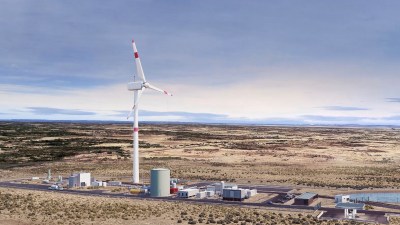Motorsports Are Turning To Alternative Fuels

As the world grapples with the issue of climate change, there’s a huge pressure to move transport away from carbon-based fuels across the board. Whether it’s turning to electric cars for commuting or improving the efficiency of the trucking industry, there’s much work to be done.
It’s a drop in the ocean in comparison, but the world of motorsports has not escaped attention when it comes to cleaning up its act. As a result, many motorsports are beginning to explore the use of alternative fuels in order to reduce their impact on the environment.
A New Focus
Historically, motorsports have paid little heed to things like emissions or efficiency. Instead, the focus was on generating the maximum possible power available, everything else be damned — barring excessive fuel consumption, which could necessitate extra pit stops. However, in recent decades, automakers and sponsors have desired to get away from this devil-may-care attitude, which can reflect poorly on them outside of the motorsports fan base.
Early moves towards cleaning up motorsports have seen Formula 1 begin using hybrid power units, as well as the establishment of all-electric series like Formula E. However, the world of motorsport is still almost entirely powered by fossil fuels, something which is only now beginning to show signs of change.
The Contenders
There are three main replacements for traditional fossil fuels that are slated for use in the world of motorsports. Biofuels, synthetic fuels (also known as e-fuels) and hydrogen are of great interest, as they promise to bring motor racing closer to a carbon-neutral ideal, at least when it comes to tailpipe emissions.
Hydrogen
Hydrogen is one of the simplest “clean” fuels out there. Generating it is as simple as running electricity through water, and if you do so using renewable energy, congratulations! You’ve created a clean fuel without creating any carbon emissions, and burning it only creates water as a byproduct.
Typically, when we talk about hydrogen as fuel, we think of fuel-cell vehicles. These combine hydrogen with atmospheric oxygen to generate electricity to drive electric motors. However, there are louder, more exciting ways to use hydrogen, too. Internal combustion engines can be modified to run on hydrogen, producing comparable power outputs to similarly-sized petrol engines.
Hydrogen is already seeing use in motorsports. Toyota entered a Corolla Sport car with a hydrogen-burning engine in this year’s Fuji Super TEC 24 Hour race. The car completed the race successfully, though was only able to achieve 10 laps at a time before needing to refuel. Neither could the car refuel in the usual pitlane; the hydrogen tanks instead had to be topped off in a special area in the paddock. However, it served as a useful demonstration of hydrogen combustion engine technology.

On the other hand, Gaussin, a manufacturer of a variety of battery-electric and fuel cell vehicles, plans to take its H2 Racing Truck to compete in the 2022 Dakar Rally in Saudi Arabia. The gruelling race takes place in the desert, with competitors travelling over 7000 km throughout the event. Support crews will have to truck hydrogen across the desert to support the effort in much the same way as race teams do with gasoline today. The H2 Racing Truck can be refuelled with 80 kg of hydrogen in under 20 minutes for a range of 250 km at racing pace. With fuel cells outputting 380 kW and a full 82 kWh of batteries on board, its twin 300 kW motors can accelerate the truck up to the rules-mandated maximum of 140 km/h.
Biofuels
Many of us are already familiar with biofuels, which have been used in the transport sector for years now. Bioethanol, typically produced from corn or other sugars or starches through fermentation, is often mixed with traditional gasoline in 10% and 85% blends, sold as E10 and E85 around the world. Biodiesel, on the other hand, is produced from oils or fats in a chemical process, with waste cooking oils, vegetable oils, or soy often used as a feedstock.
These fuels are considered more environmentally friendly than fossil fuels. This is because the plant-based feedstocks used to make the fuel capture carbon out of the air as they grow. This offsets the carbon output by vehicles that burn the fuel.

Race series such as V8 Supercars in Australia and Indycar in the US have used E85 fuels for years now, with the fuel coming with a benefit of reduced detonation, allowing higher performance with the right engine tune. Meanwhile, NASCAR runs an E15 blend.
Diesel is less commonly used in motorsports, particularly since the Dieselgate fiasco spoiled the fuel’s environmentally-friendly brand. Regardless, a handful of teams have used biodiesel to fuel their racers over the years. Mazda did just that in the recent Super Taikyu race, filling its car with fuel derived from waste cooking oil and processed microalgal fats.
e-Fuels
e-fuels, also known as electrofuels, are a relative new development. The basic idea is simple. Hydrogen, ideally split from water using renewable energy, is combined with carbon dioxide captured from the air, to make useful hydrocarbons that are drop-in replacements for the fuels we use today. Intense chemistry and plenty of electricity is required to complete the process.
Essentially, the idea is to take renewable electricity from sources like solar and wind, and store it in the chemical bonds of hydrocarbons to be released through combustion in the traditional way. Some e-fuels are intended to be direct drop-in replacements for petrol or diesel without requiring any engine modifications. This would allow regular cars to be run in a far more environmentally-friendly way, with the fuel production process capturing CO2 to offset vehicle tailpipe emissions.
By using water and captured CO2 as feedstocks, with renewable energy supplying the required electricity, to the process is theoretically carbon neutral, there or thereabouts. However, carbon capture is not a mature technology, nor particularly efficient. Plus, burning hydrocarbons of any sort in an internal combustion engine wastes a lot of energy as well. Generally, it’s far more efficient to simply store renewable energy in the batteries of an electric car, and use it that way, rather than turning it into fuel first, transporting it, and then burning it later. One study estimates that using renewable energy to make e-fuels for combustion engines leads to a total system efficiency of just 16%, versus 72% by just putting the electricity directly in an electric car.

Regardless, some manufacturers are still pursuing e-fuels. They have the attraction of working just fine in existing combustion engines, while going some length towards assuaging environmental concerns. Audi has been working on the technology. Fellow German automaker Porsche has also dived in, beginning construction this year on a pilot plant that hopes to produce 550 million liters of e-fuels per year by 2026. The project will combine hydrogen with air-captured CO2 to produce methanol, which will then be further processed into a synthetic e-fuel product. Meanwhile, the company is already testing lower-carbon fuels in its motorsports programs.
The hope is that these new fuels can cut carbon emissions by up to 90%, and go some way to allowing the cherished internal combustion engine to carry on some ways into the future. While they may be less clean than simply running electric cars, e-fuels could go a long way to enabling the existing combustion-engined fleet of vehicles to run more cleanly for years to come.
Summary
Alternative fuels are, at this stage, a great way for motorsports teams to polish up their environmental credentials. In a political moment when everyone is being asked to clean up their emissions, the world of motorsports needs to be seen to be doing its part, lest sponsors and automakers quickly abandon the sport in droves.
However, alternative fuels aren’t perfect, and typically only reduce carbon emissions rather than eliminating them entirely. They also don’t do anything to make up for the huge amount of emissions created flying race cars, drivers, and team members all over the world.
In any case, the technology will continue to be developed, and we may see these fuels become more mainstream in motorsports in future. With “cleaner” fuels like E85 already strongly establishing themselves, there’s clearly scope for more of the same in the future.
Post a Comment